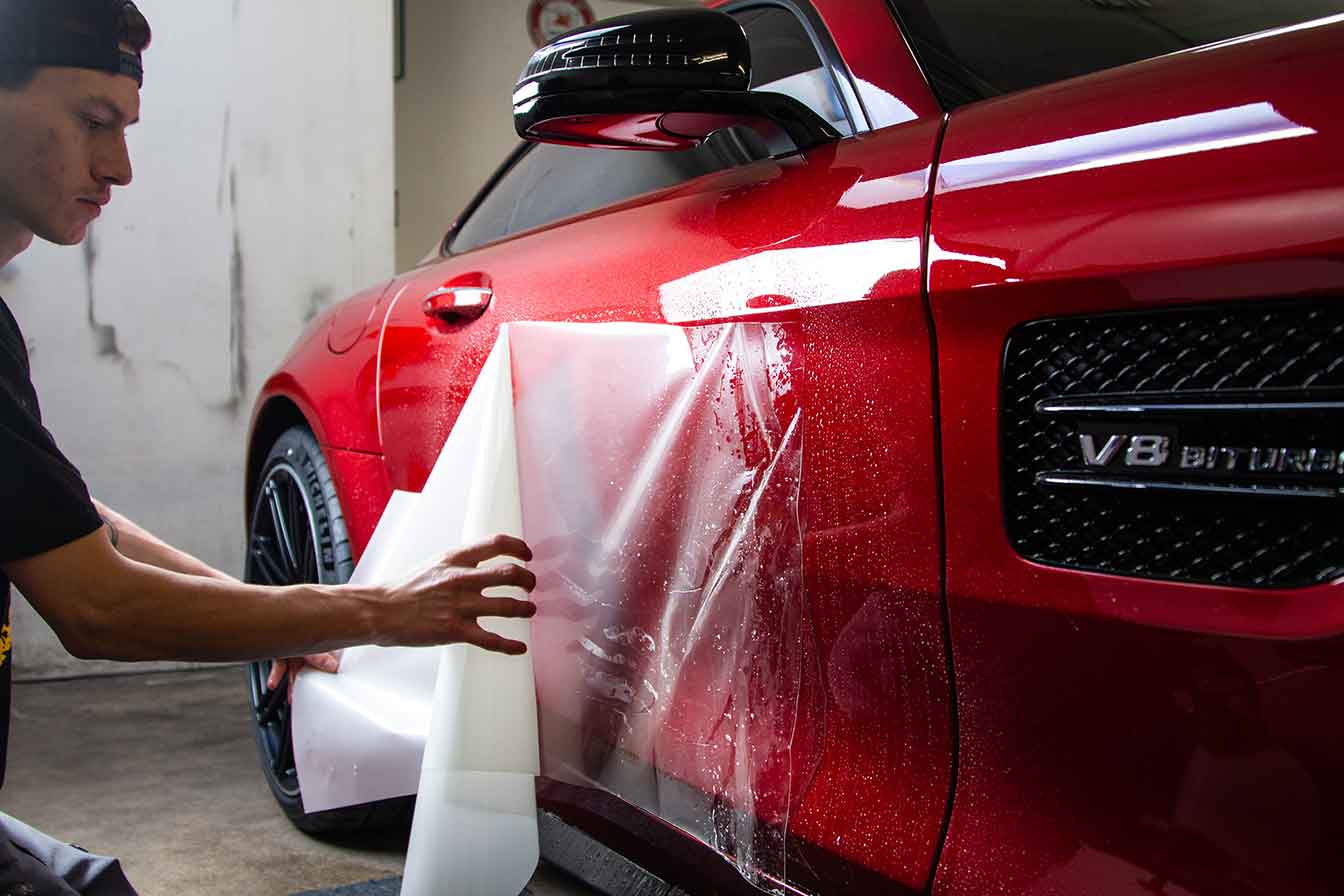Why Ceramic Layer Is the Ultimate Remedy for a Flawless End Up
Ceramic covering has actually emerged as a leading service for those seeking a flawless finish for their cars, thanks to its remarkable toughness and safety features. What elements absolutely set ceramic coating apart?
What Is Ceramic Coating?

When applied appropriately, ceramic finishing creates a hydrophobic surface area that repels water and dirt, making it easier to cleanse and keep. Unlike standard waxes or sealers, which typically provide short-lived defense, ceramic layers can last for several years, depending upon the product quality and application approach. The process of applying ceramic finishing calls for meticulous preparation, consisting of complete cleansing and often paint correction, to ensure optimum bonding and effectiveness.
Ceramic finishings are not restricted to automobile surfaces; they can additionally be utilized on numerous materials, consisting of glass, steel, and plastics, giving a flexible remedy for improving protection. In general, ceramic finishing represents a considerable innovation in surface defense modern technology, integrating both visual and useful benefits for a large range of applications.
Advantages of Ceramic Layer
While several surface area protection options exist, the benefits of ceramic finish stand out because of its special buildings and durable efficiency. One of the primary advantages is its extraordinary resilience. Ceramic Coating Philadelphia. Unlike conventional wax or sealers that require regular reapplication, ceramic finishings provide a durable layer that can last for numerous years, dramatically lowering upkeep initiatives
Another significant advantage is boosted defense against ecological impurities. Ceramic finishings produce a hydrophobic surface that fends off water, dirt, and numerous pollutants, making it less complicated to cleanse. This feature not only preserves the automobile's appearance however additionally reduces the threat of deterioration and oxidation, particularly in harsh weather.
Additionally, ceramic layers provide remarkable resistance to UV rays, avoiding fading and degradation of paint over time. This UV protection is critical for preserving the aesthetic worth of vehicles and surfaces subjected to direct sunshine.
In addition, the glossy finish attained with ceramic finish boosts the general aesthetic appeal, offering surfaces a showroom-quality luster. Overall, ceramic coatings represent a considerable development in surface area protection technology, supplying enduring advantages that deal with both functional and aesthetic demands.
Exactly How It Functions
Understanding the scientific research behind ceramic finishings reveals how they supply such amazing protection and long life. At its core, a ceramic covering is a liquid polymer that chemically bonds with the automobile's factory paint.
The application procedure entails multiple actions, including surface area prep work, which is essential to attaining optimal bond. When used, the finish undergoes a curing procedure, during which it solidifies and forms a semi-permanent bond with the paint surface. This bond is what identifies ceramic finishes from conventional waxes and sealers, offering a longer-lasting protective obstacle that can sustain for years.
Furthermore, the thickness of the finish can boost its protective top qualities, ensuring that it can withstand severe conditions. Inevitably, the scientific research of ceramic finishings incorporates innovative materials with ingenious application go to website methods to deliver an unparalleled degree of security and visual enhancement for cars.
Comparison With Traditional Approaches
When compared to traditional paint defense techniques such as sealants and waxes,The benefits of ceramic coverings end up being particularly noticeable. While waxes supply a short-term shine, normally lasting a couple of weeks to a couple of months, ceramic finishes give a resilient protective layer that can sustain for several years. This sturdiness considerably decreases the frequency of reapplication, making ceramic coatings a much more cost-efficient service with time.
In addition, standard approaches frequently require substantial preparation and multiple applications to accomplish a satisfactory level of security. On the other hand, ceramic finishes bond at a molecular level with the automobile's surface, producing a robust shield versus environmental contaminants like UV rays, acid rain, and roadway salts. This bond boosts the lorry's resistance to scratches and swirl marks, which prevail with standard waxes and sealants.
Furthermore, the hydrophobic homes of ceramic layers drive away water and dirt, bring about simpler cleaning and maintenance. In contrast, wax and visit the site sealant-treated surfaces can bring in gunk, necessitating more constant cleaning - Ceramic Coating Philadelphia. Generally, ceramic coverings not only provide superior protection but additionally provide a much more aesthetically enticing and long-lasting finish, developing them as the recommended option for critical lorry owners
Application and Maintenance Tips

Utilizing a foam applicator, use the finish in little sections, adhering to the manufacturer's guidelines concerning density and overlap. Permit sufficient curing time in between coats, typically 24 hours, to ensure appropriate bonding. After application, it is essential to avoid direct exposure to water or rough components for at the very least a week to enable the coating to completely heal.
For upkeep, wash the lorry frequently with pH-balanced soaps and avoid abrasive products. Touchless cars and truck washes are suggested to lessen damaging. In addition, using a ceramic maintenance spray can boost the finishing's hydrophobic residential or commercial properties and long life. Routine assessments for any type of signs of wear will help preserve the layer's stability and protect that immaculate finish.
Verdict
In conclusion, ceramic coating becomes an exceptional choice for my response achieving a remarkable vehicle finish. Its remarkable sturdiness, protective qualities, and hydrophobic residential or commercial properties significantly enhance the automobile's look while simplifying maintenance efforts. By creating a durable bond with manufacturing facility paint, ceramic layer effectively guards versus scratches, UV rays, and environmental contaminants. With a lifespan expanding several years, this innovative option not only protects but additionally raises the total aesthetic allure of automobiles, making it an affordable financial investment for auto lovers.
